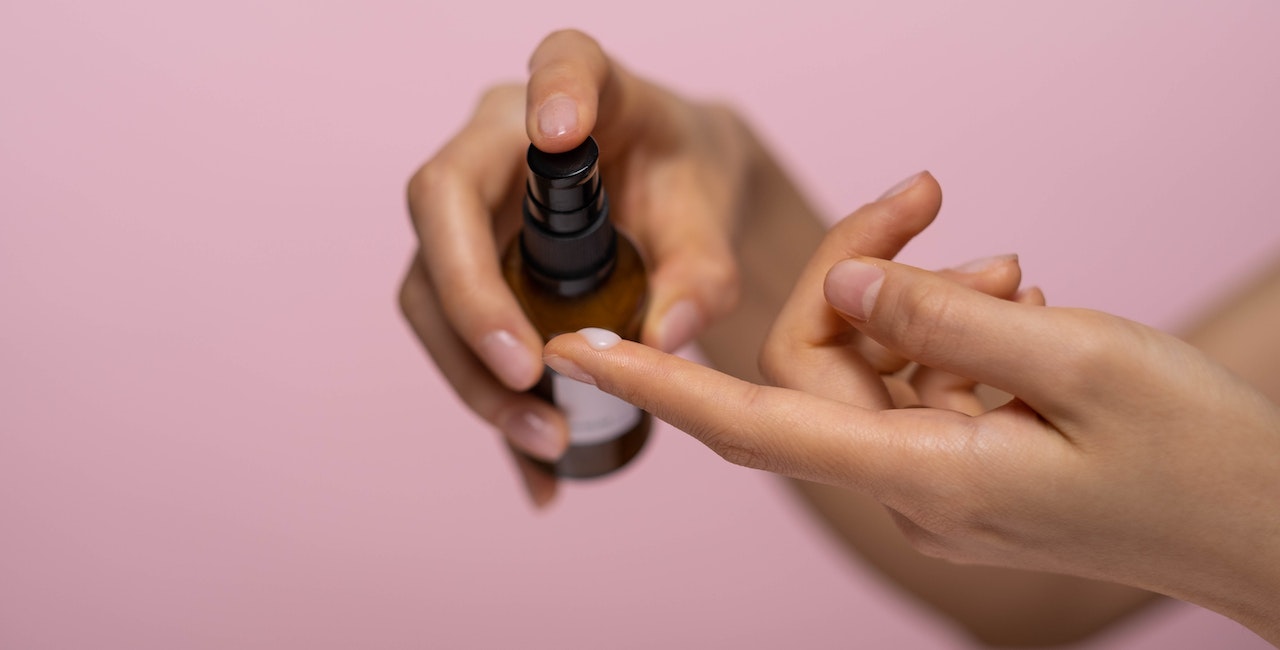Medically Reviewed by Dr. Lisa Hartford, MD
Firm and supple skin is a dream for many, but it can be difficult to achieve without the right ingredients and routine. Lifestyle factors, nutrition, and age all play a role in skin firmness, but there are also specific ingredients that can help to plump up the skin and give it a more youthful appearance.
One such ingredient is hyaluronic acid (HA). HA is a naturally occurring substance that helps to keep the skin hydrated and plump. It is found in the highest concentrations in the skin's dermis, or middle layer. As we age, the amount of HA in our skin decreases, which can lead to wrinkles, sagging, and other signs of aging.
What is Hyaluronic Acid?
Hyaluronic acid, or hyaluronan or hyaluronate, is a slimy, gooey, slippery liquid that's naturally present in the body. It's mainly found in the skin, joints, and eyes. This sugar molecule in the dermis keeps the skin flexible and tight simultaneously.

Moreover, it inhibits skin wrinkles and fine lines. This substance plays a massive role in healing the skin and preventing scarring. Hyaluronic acid is a known humectant that is able to absorb moisture and retain it. It's estimated that a quarter teaspoon of hyaluronic acid may hold one and a half gallons of water. This is what makes HA a powerful hydrating skincare ingredient.
How Does Hyaluronic Acid Work for Skin Tightening?
Hyaluronic acid is made using genetically modified bacterial fermentation. It is biocompatible and safe for human use. The glucose molecule in HA forms a polymer structure with high water affinity. This structure is single-chained, with spaces between the molecules.
As a result, it can hold water while attaching safely to the cells. Medically its applications are wound healing, derma fillers, and joint care.
When applied in serums, creams, and lotion, it forms a scaffolding layer on the skin. This layer creates a barrier on the skin while allowing it to remain elastic. As hyaluronic acid has a plumping effect on the skin, it may minimize the appearance of wrinkles and fine lines. Regular application may make the skin relatively smoother, alleviating dry skin patches.

Another impressive HA impact on skin tightening is adding hydration and moisture to extremely dry skin. HA molecules act as a humectant for the skin, so they draw moisture to the skin. Moreover, this mechanism also avoids moisture loss from the skin. With age, your skin loses the ability to hold moisture, adding to the wrinkle appearance and sagginess. Besides, the collagen in the skin breaks down faster with age. So your skin won't heal as it used to when you were younger.
HA works to tighten the overall skin and keep it elastic with the increased moisture content. This will result in less saggy contours as the water content in the dermis is improved. Overall, the skin cells hold themselves better with better hydration.
The Scientific Evidence Behind Efficacy of Hyaluronic Acid
When the right size of hyaluronic acid is used, it may penetrate the stratum corneum. Usually, a low molecular size from 20 to 300 kDa is ideal for this. A clinical study of 40-60-year-old women further proved this. Without any changes in diet and lifestyle, the participants were asked to apply a specially formulated HA cream twice a day.
A 3-dimensional scan was used to measure the distances between the surface at baseline and after treatment. The study concluded there was an increase of more than 56% in the HA content of the skin. Moreover, the active formulation resulted in increased volume under the eyes. The HA formulation increased the under-eye skin's firmness, restoring tightness.
The increase in skin volume went from + 0.11 mm on day 15 to + 0.14 mm on day 29. Overall, there was a hydration rise of 4 units in the cheekbone area after 29 days.
Benefits of Using Hyaluronic Acid
Clinical trials are proof that hyaluronic acid is beneficial to the skin. Here are some ways your skin will feel rejuvenated after regular use.

Supple, hydrated skin
Hyaluronic acid has the ability to hydrate the skin deeply. Due to its water affinity, it attracts and retains moisture, helping to keep the skin plump and well-hydrated. This may result in a more supple and youthful appearance.
Quicker healing
HA promotes tissue regeneration and helps to maintain a moist wound environment, which may accelerate the healing process. It aids in reducing inflammation and supporting the skin's natural healing mechanisms. If you have active acne and scars, HA might help heal them faster.
Diminished fine lines
Hyaluronic acid's plumping effect on the skin fills in fine lines and wrinkles. By providing hydration and improving skin elasticity, HA may help to minimize the appearance of fine lines, making the skin appear smoother and more youthful.
Anti-aging effect
As we age, the natural hyaluronic acid in our bodies decreases, leading to a loss of skin elasticity and the formation of wrinkles. Using hyaluronic acid topically can help replenish the skin's hyaluronic acid levels, reducing the depth of wrinkles and promoting a more youthful appearance.
Smoother skin
Your skin texture may improve using HA as it aids in reducing roughness and increasing elasticity. Moreover, it helps to create a smoother and more even skin surface, enhancing the overall complexion and radiance of the skin.
Expert Advice for Using Hyaluronic Acid on Face
Hyaluronic acid is considered safe for all skin types. You may use an HA-based serum, moisturizer, or gel for skin hydration. After cleansing and toning, it can be included in AM and PM skincare regimen. Seal the hyaluronic serum with a moisturizer for plump skin.

You may incorporate EvenSkyn Conduction Gel with hyaluronic acid and collagen peptide during radiofrequency, ultrasound, or microcurrent treatments. It will act as a protective lubricant between your skin and the device, giving you maximum benefits.
Furthermore, hyaluronic acid is safe with active ingredients like retinol, vitamin C, AHAs, and BHAs. So you don't have to worry about interactions.
Wrapping Up
If your skin feels parched, it's time to invest in hyaluronic acid skin care. HA is a safe ingredient that is low reactive with other active ingredients while delivering multiple benefits. Since it's suitable for all skin types, anyone can use it. Using hyaluronic acid in skin care creams, gels, and serums may amplify hydration and firm your skin. Apply twice a day post-cleansing and toning to see the results. Consistency and using the right products are crucial for youthful, radiant skin.
References:
1. Flavia Alvim Sant’Anna Addor. “Beyond photoaging: additional factors involved in the process of skin aging.” 2018
2.Eleni Papakonstantinou, Michael Roth, and George Karakiulakis. “Hyaluronic acid: A key molecule in skin aging.” 2012
3. Zoe Diana Draelos, Isabel Diaz, Jin Namkoong, Joanna Wu, “Efficacy Evaluation of a Topical Hyaluronic Acid Serum in Facial Photoaging.” 2021
4. Miranda A. Farage, Kenneth W. Miller, “Characteristics of the Aging Skin” 2013
5. Remo Campiche, Eileen Jackson. “Skin Filling and Firming Activity of a Hyaluronic Acid Inducing Synthetic Tripeptide.” March 2020
6. Bruna Bravo, Priscila Correia. “Benefits of topical hyaluronic acid for skin quality and signs of skin aging: From a literature review to clinical evidence.” 2022









Leave a comment
All comments are moderated before being published.
This site is protected by hCaptcha and the hCaptcha Privacy Policy and Terms of Service apply.